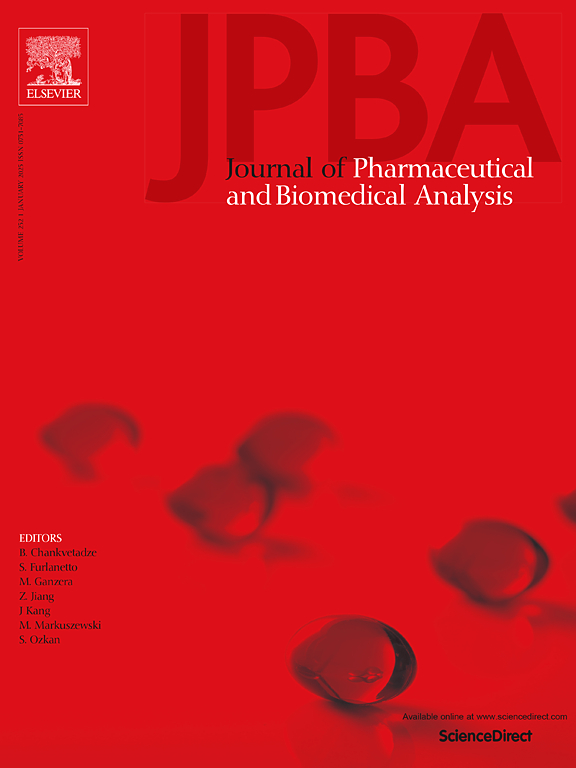Fast quality assessment and origin identification of Gentianae Macrophyllae Radix using fourier transform infrared photoacoustic spectroscopy coupled with chemometrics
IF 3.1
3区 医学
Q2 CHEMISTRY, ANALYTICAL
Journal of pharmaceutical and biomedical analysis
Pub Date : 2025-02-25
DOI:10.1016/j.jpba.2025.116774
引用次数: 0
Abstract
This study explores the application of Fourier Transform Infrared Photoacoustic Spectroscopy (FTIR-PAS) combined with chemometric analysis for rapid quality assessment and origin species verification of Gentianae Macrophyllae Radix (Qinjiao). Qinjiao, a traditional Chinese medicinal herb, faces significant challenges in quality control due to frequent adulteration and substitution. In this study, 195 Qinjiao samples were analyzed using FTIR-PAS, and chemometric techniques were employed for both classification and regression analysis. The results demonstrate that FTIR-PAS, integrated with chemometric methods, effectively differentiates Qinjiao samples by species. The combination of Detrending (DT) preprocessing and a K-Nearest Neighbors (KNN) classification model achieved an accuracy of 97.4 % in species identification. For quantitative analysis, Savitzky-Golay (SG) smoothing was the optimal preprocessing method for gentiopicroside, while DT was best for loganic acid, and no preprocessing was necessary for roburic acid. Additionally, the Competitive Adaptive Reweighted Sampling (CARS) algorithm, combined with models such as XGBoost and Random Forest (RF), significantly improved the prediction accuracy of key active components, with the highest reaching 0.84. This research underscores the potential of FTIR-PAS as a rapid, non-destructive approach for the quality assessment and authentication of traditional Chinese medicinal materials.
利用傅立叶变换红外光声光谱和化学计量学快速评估龙胆草的质量和产地鉴定
本文章由计算机程序翻译,如有差异,请以英文原文为准。
求助全文
约1分钟内获得全文
求助全文
来源期刊
CiteScore
6.70
自引率
5.90%
发文量
588
审稿时长
37 days
期刊介绍:
This journal is an international medium directed towards the needs of academic, clinical, government and industrial analysis by publishing original research reports and critical reviews on pharmaceutical and biomedical analysis. It covers the interdisciplinary aspects of analysis in the pharmaceutical, biomedical and clinical sciences, including developments in analytical methodology, instrumentation, computation and interpretation. Submissions on novel applications focusing on drug purity and stability studies, pharmacokinetics, therapeutic monitoring, metabolic profiling; drug-related aspects of analytical biochemistry and forensic toxicology; quality assurance in the pharmaceutical industry are also welcome.
Studies from areas of well established and poorly selective methods, such as UV-VIS spectrophotometry (including derivative and multi-wavelength measurements), basic electroanalytical (potentiometric, polarographic and voltammetric) methods, fluorimetry, flow-injection analysis, etc. are accepted for publication in exceptional cases only, if a unique and substantial advantage over presently known systems is demonstrated. The same applies to the assay of simple drug formulations by any kind of methods and the determination of drugs in biological samples based merely on spiked samples. Drug purity/stability studies should contain information on the structure elucidation of the impurities/degradants.

 求助内容:
求助内容: 应助结果提醒方式:
应助结果提醒方式:


